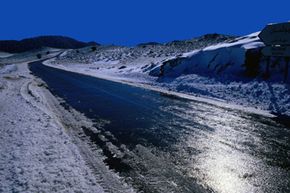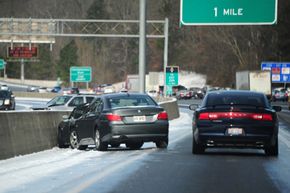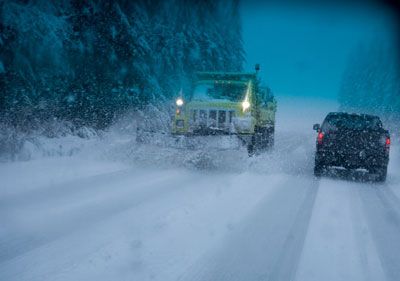It's the most ironic of morning weather forecasts: "Watch out for black ice on your morning commute." It's a little difficult to watch out for something that's nearly impossible to see, Mr. Meteorologist.
It often disguises itself as an innocent puddle of water on the road, luring innocent drivers into complacency. Then they drive across it at speed, lose control and spin straight off the side off a cliff.
Advertisement
Upon losing control, the car tumbles end over end to the bottom of a deep ravine, where it explodes into a ball of flame at least six stories high. But wait! The driver is hanging on to the side of the cliff by his fingertips!
What were we talking about? Oh yeah, black ice. The truth is, it's dangerous; although, it probably won't spin you into a clichéd action movie scene.
It most often forms overnight as temperatures drop, making cold, sunless winter mornings the most likely time for drivers to find patches of the stuff. There are lots of helpful guides for driving on black ice should you ever find yourself sliding along on some — like this guide right here — but it basically boils down to removing your foot from the gas, resisting the urge to mash the brake pedal and holding the steering wheel straight until you can find traction again.
This is all way easier said than done, of course. It also helps to make the decision not use cruise control if you suspect black ice might be lurking out there in the cold — that way you'll have more control over the car in case of a slip.
Knowing how to react (or not react, as the case may be) when you drive across a spot of patchy ice is practical; but if you've ever wondered what this stuff is, how it forms, and what makes it so dangerous, we're here to help.
Advertisement



